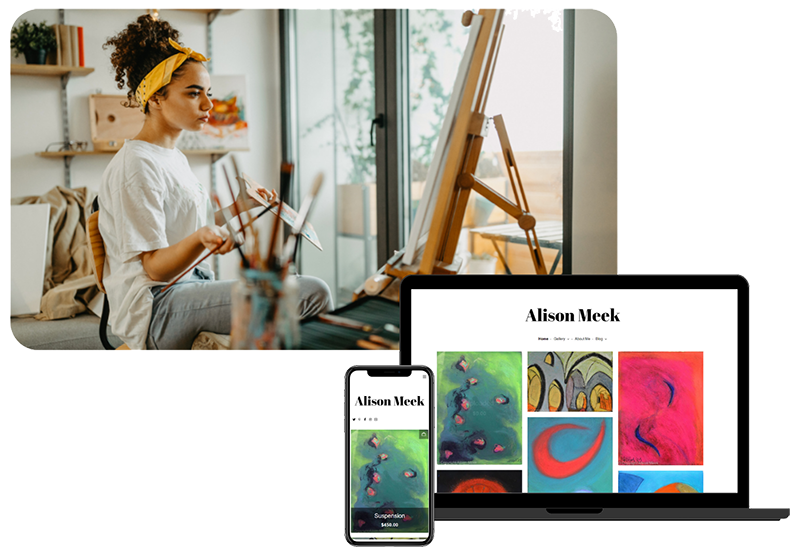From the Middle Ages, the arts have been upheld by a system of patronage. Much like today, artists entered into contracts with patrons which specified a fee for the artist’s work, time, and materials. However, rich individuals and institutions often extended this patronage to provide ongoing financial support and backing. Despite the changing role of the artist, there are still many parallels to be drawn between our contemporary age and the patronage of the past. In this article, Artweb looks at the history of arts patronage and asks how and where it can be found today.
The historical role of patronage
The most basic definition specifies a patron as ‘a person or organisation that supports another’. Historically, if you were an artist with a powerful patron, your financial security was more or less guaranteed. In the Renaissance period, it was not uncommon for an artist to also be provided housing as a sort of ‘on-call’ professional. The artist was seen as a genius, in need of backing to create their unique visions.

Take Lorenzo de’ Medici of 15th-century Florence, for example, who Machiavelli once described as ‘the greatest patron of literature and art that any prince has ever been’. In his relatively short life, he funded the careers of now internationally renowned artists such as Leonardo da Vinci, Sandro Botticelli and Michelangelo. In more recent times, the heiress Peggy Guggenheim became a patron of the avant-garde from the 1930s right up until her death in 1979, supporting modern masters like Jackson Pollock and Max Ernst.
Pros and cons
In the margin of his journal, Da Vinci once wrote: ‘The Medici made me, and the Medici destroyed me’. Though historians can only speculate on his intentions, it’s not wild to imagine that it may have referred to the restrictions of his patronage. There are many reasons a person, or institution, may choose to support an artist, including social status and financial gain. In the past, many artists were financed by the church and monarchy due to their power and wealth. It was highly unlikely that an average person could make it as an artist without the influence of these institutions behind them. However, working for these powerful clients often had its setbacks. There was an expectation that one’s own artistic sentiments would be dropped in favor of the patron’s needs. Though in many cases, as the support of a patron bolstered the reputation of an artist, prompting the commissions of others, creative freedom could eventually be acquired over time.
Patronage today
With the church no longer at the fore, the UK government has filled the role as the major arts patron of the 21st century. Millions of pounds are awarded to artists every year to ‘champion, develop and invest in artistic and cultural experiences that enrich people’s lives.” Supporting musicians, poets and fashion designers — the definition of the artist has been significantly expanded. Grants are still given to support the completion of singular projects, but there are also funds to help artists and groups develop their practise organically.
Though government support is not the only model, and over the last 50 years, patronage has also found its way into the art market, with collectors holding more power today than ever before. Just like the old school patron’s of the Renaissance, collectors have the ability to make or break an artist’s career. Famously, Charles Saatchi was responsible for the rise of the Young British Artists in the 1990s, launching the careers of now household names like Damien Hirst and Tracey Emin.
Whilst many hold the opinion that patronage is at its best without economic results, it’s important to remember that there are multiple ways patronage presents itself in the 21st century, and motivations alone don’t necessarily make it good or bad.
Creating conditions for patronage
Part of the appeal for wealthy patrons was the feeling of connection it brought them, drawing them into proximity with the art. Likewise, providing your clients with an experience that resembles collaboration is a sure way to create repeat commissions and foster relationships that mirror the commitment of patrons past to their sponsored artists. Your personality and unique voice is an asset here. Make it easy for potential clients and patrons to find you by maintaining a strong online presence and being open and authentic in your communication. Take a look at the following articles for tips on getting your work out there and fostering a collaborative relationships with your clients:
- How to turn buyers into repeat customers
- How to get press coverage as an artist: 6 practical tips
- A six-step guide to art commissions
- Art and money: networking and marketing for artists
Where to find a patron?
As with any successful relationship, the key to a thriving patron–artist relationship is about finding the right fit. Where artists of the past were handpicked by their patrons, today there are many digital tools which allow artists an active role in seeking out the ideal patron for them.
Platforms like Patreon offer artists a way of creating a sustainable income from their supporters. These models allow fans to pledge a set amount every month, commonly ranging from £1 to £50, and in return, artists may offer incentives such as prints, or exclusive online sessions. Whilst this works well for those with large followings, it’s not for everyone, and does require a level of consistent engagement with those supporters.
Alternatively, many artists now seek patronage from corporations. Brands, like Red Bull, for example, seek to align themselves with artists that reflect their values and aesthetics.
Just like the large-scale patronage of the past, working alongside successful businesses has the added benefit of giving your art a reach that it may not have gathered organically.







